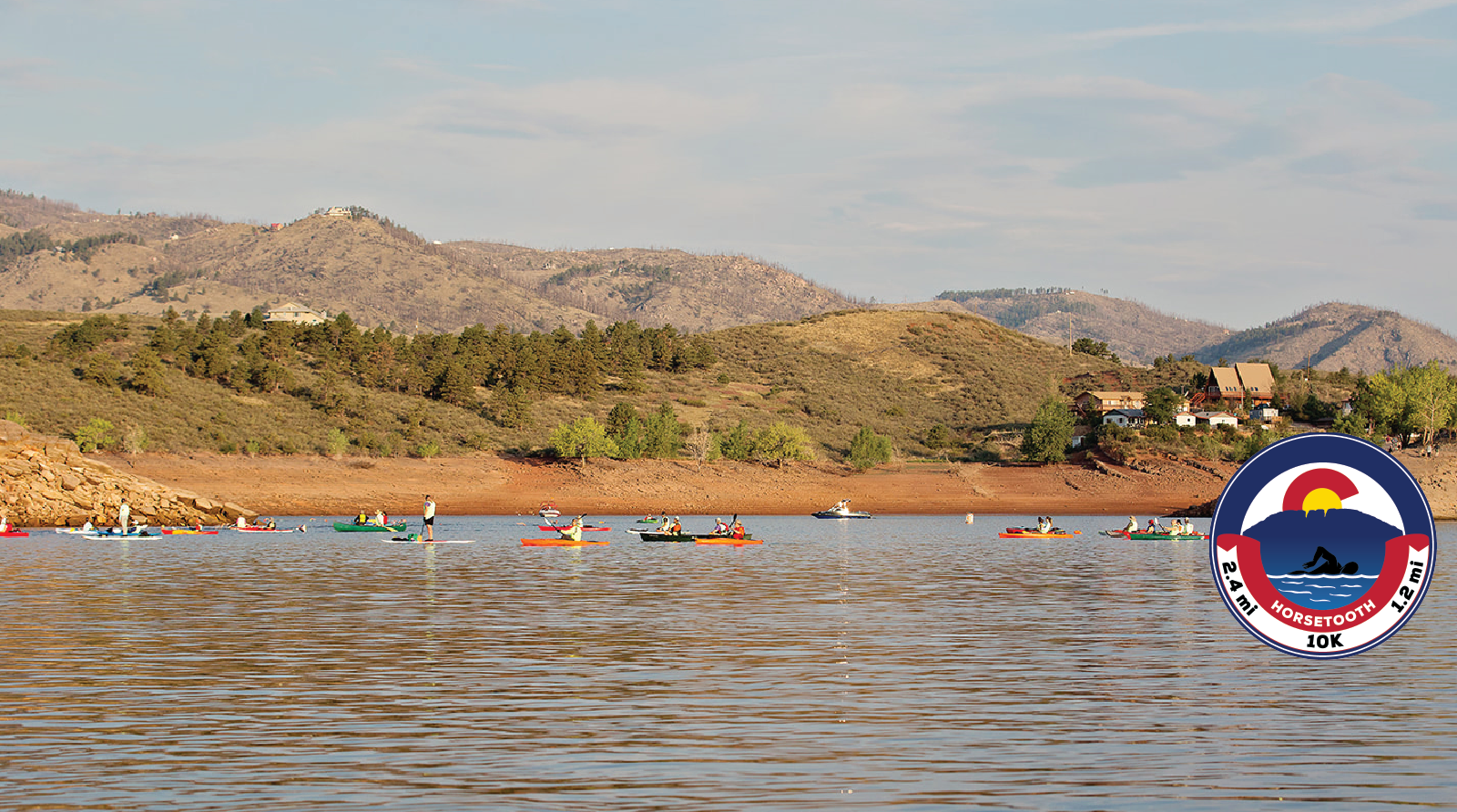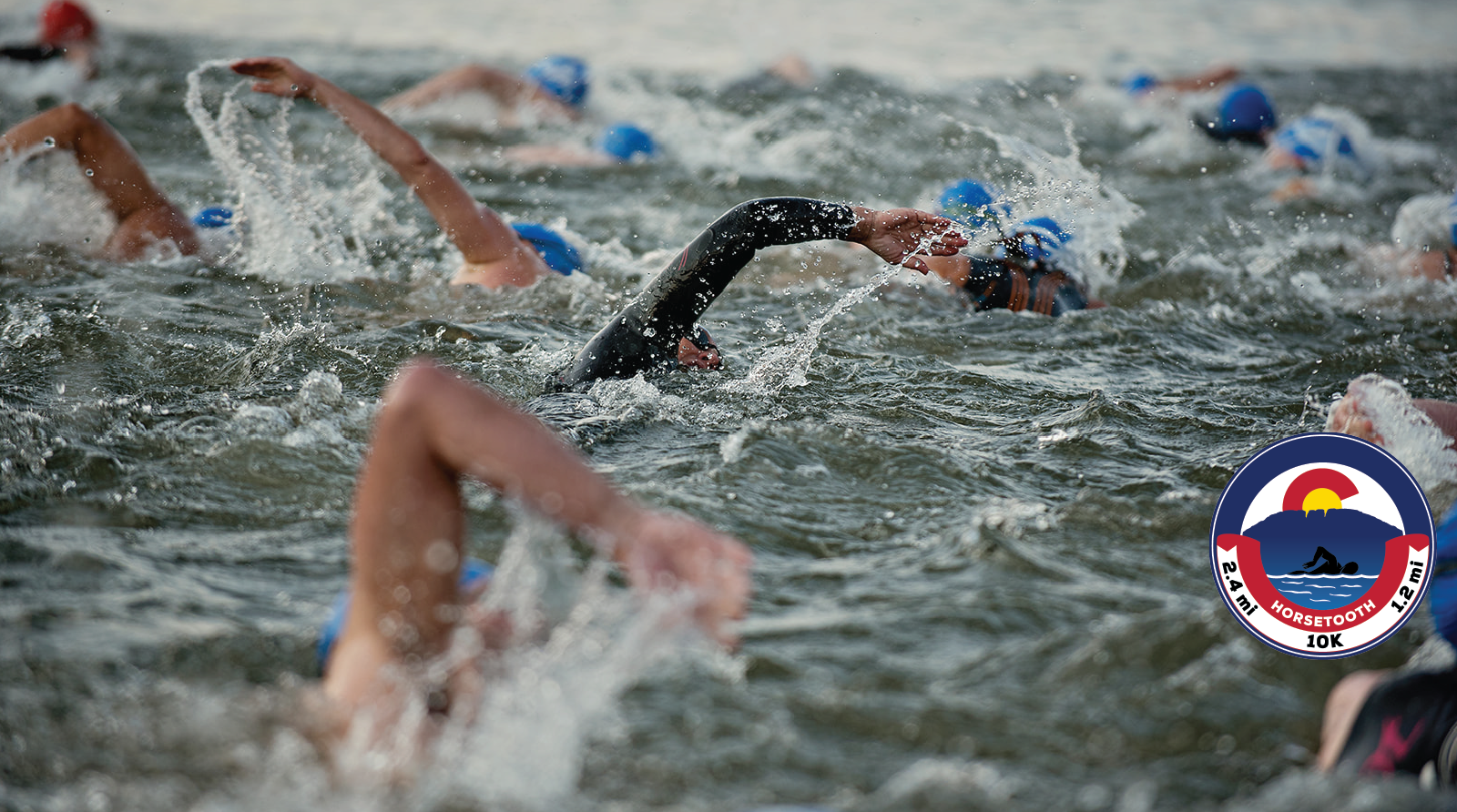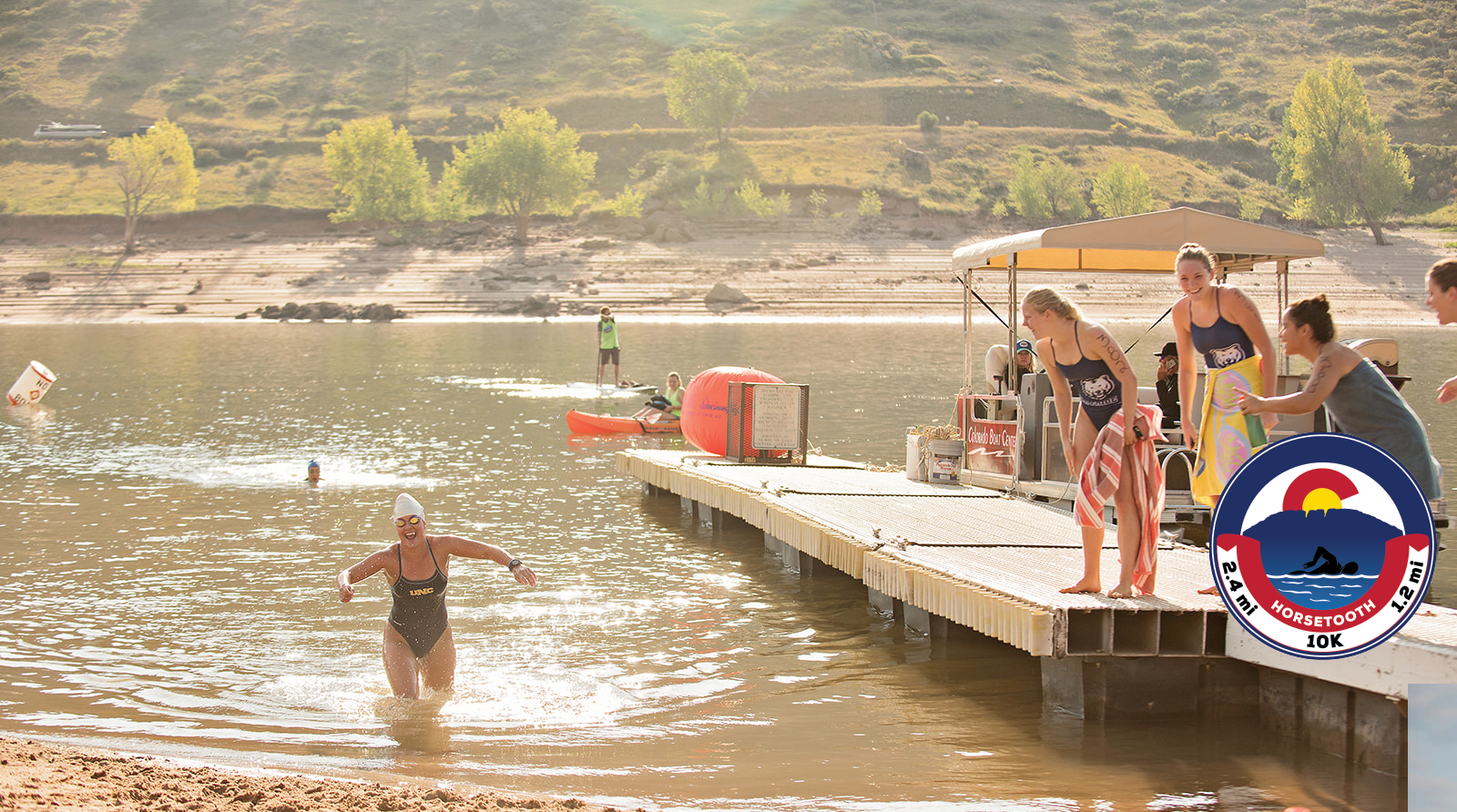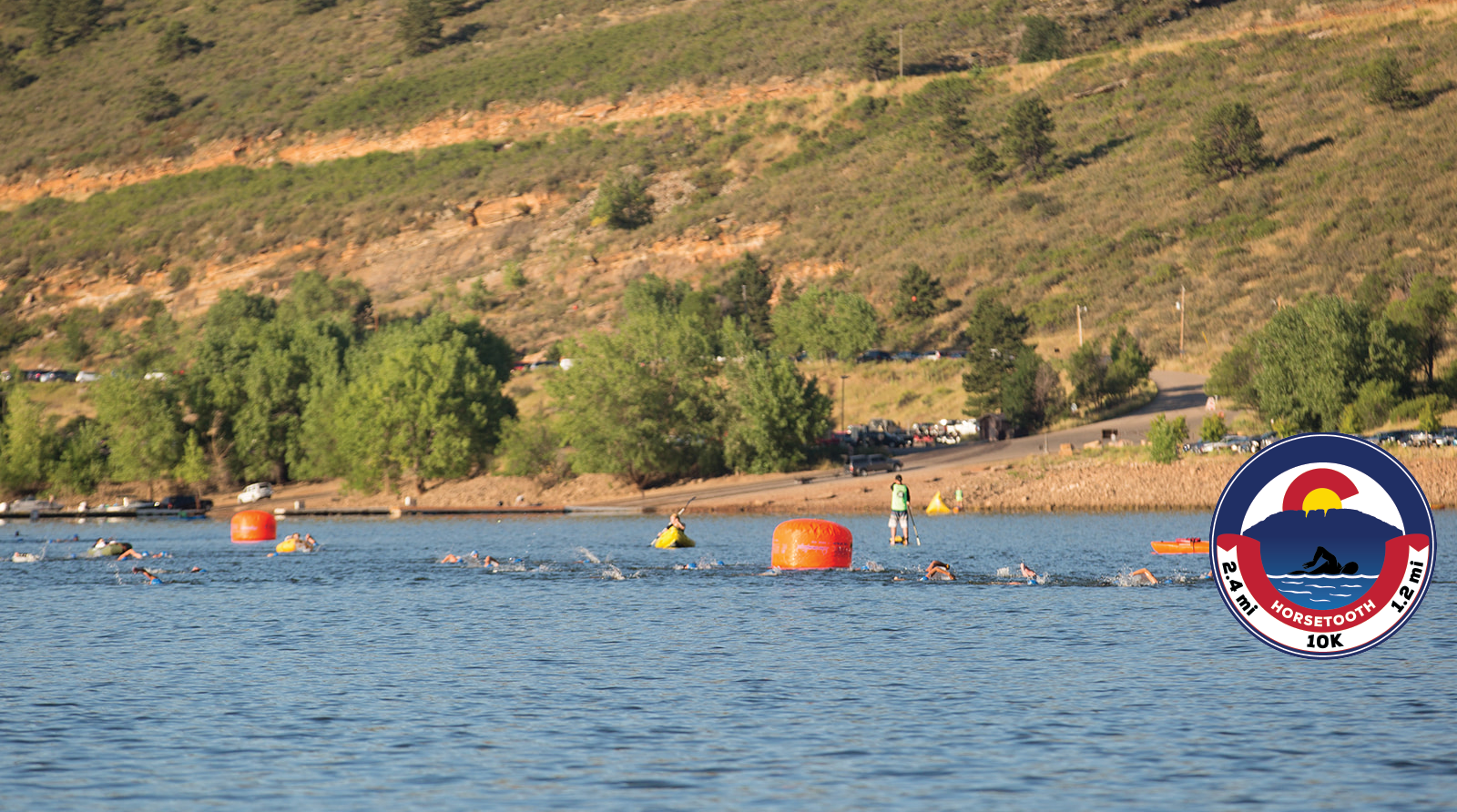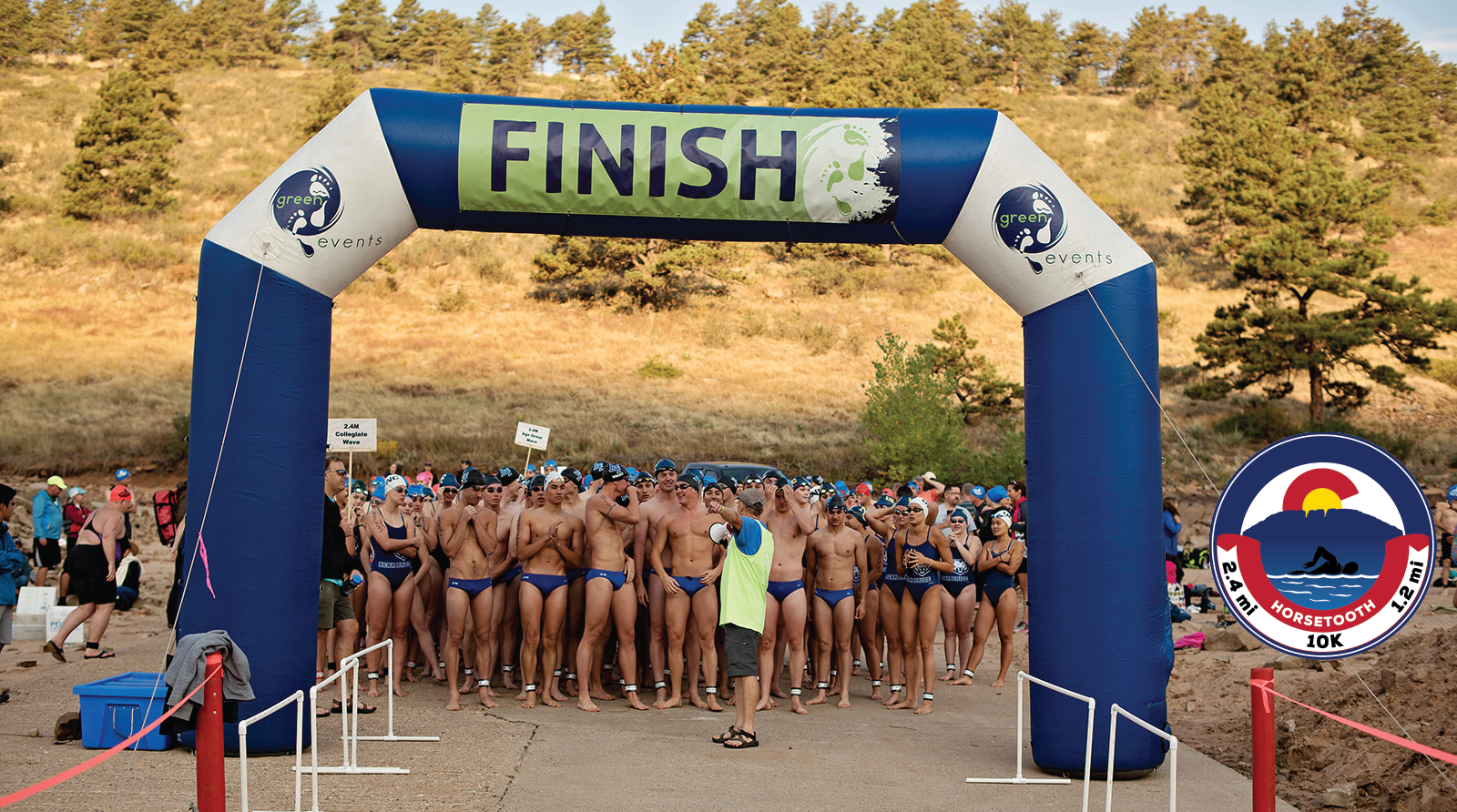What is Partners Mentoring Youth?
Partners Mentoring Youth’s mission is to create and support one-to-one mentoring partnerships between positive adult role models and youth facing challenges in their personal, social and/or academic lives. Our mission is to empower youth and community members to achieve their full potential through mentoring, prevention education, and strategic partnership.
What and where is Horsetooth Reservoir?
Horsetooth Reservoir is a man-made reservoir just west of Fort Collins, Colorado in the foothills of the Rocky Mountains (about 70 miles north of Denver). The reservoir is typically 6.5 miles long and around 1.5 mile across. The highest elevation for the water (when the reservoir is full) is 5430 feet above sea level. Water temperature averages 65-70 °F (18-21 °C) in August.
The name Horsetooth comes from a distinctive rock above the reservoir that looks like two horse’s teeth. Information on the reservoir and the park is available at Larimer County Parks.
Why would anyone ever want to swim in open water?
“And I swam as if I had learned to fly. I raced across the water. My strokes felt powerful, and I felt strong, alive, as if awakened for the first time. Nothing in the swimming pool gave me this pleasure. I was free, moving fast, feeling the waves lifting and embracing me, and I couldn’t believe how happy I was. It was like I had gone from cage into limitless possibilities. With each stroke, my own strength grew; I felt the speed, the wake my body created. It was such a tremendous sensation, as if I had found my place, finally, found my niche in the universe. I was really going somewhere. I am really moving forward. There were no walls, no black lines to follow, no lane lines or backstroke flags.”
Swimming to Antarctica: Tales of a Long Distance Swimmer by Lynne Cox, Knopf, 2004.
And if that’s not enough reason, there’s always bragging rights with your friends, or to just confirm for everyone else that “yes, indeed, I am certifiably crazy”.
Who thought up such a silly 10k event in cold mountain water?
Oliver Turner, a former graduate student at Colorado State University initiated the 10K event. He is an experienced long distance swimmer who has swum the English Channel and Manhattan Island Marathon Swim.
Later, the Race Committee added the 2.4 mile, 1.2 and youth swims.
Who runs this event?
A bunch of crazy folks who love open water swimming are the (volunteer) organizers. In addition to the pure pleasure of open-water, long-distance swimming, we do this to raise money for Partners Mentoring Youth.
Are these swim events approved?
Yes, the races are approved by Larimer County and their related agencies.
Do government officials know about this event?
Yes, of course, we have approval from Larimer County Parks and Open Lands that runs the recreational activities at Horsetooth Reservoir. In addition, the Bureau of Reclamation, the federal agency that owns the reservoir, is fully supportive.
I’m worried I’m not fast enough. How long have do people take?
For the 10K, the leading men and women take 2 ½ hours; slower swimmers take 4 to 5 hours (5-hour cutoff time). Average time is 3 hours. See prior results.
What if I have to “go” during the race?
There are restroom facilities at both the start and finish lines. You could go back to the start line, or hurry to the end. Beyond that, the organizers will not be providing porta potties along the course. Sorry, you will have to relieve yourself some other way. There’s a lot of water out there so any waste will be diluted rather quickly. If you are caught urinating in the reservoir, you will be cited by the park rangers, ticketed and forced to do 25 hours of community service. And, yes you will be disqualified from the event. Members of the race committee are currently ‘serving their time’ and can give you recommendations for worthy causes if you are penalized.
What if I get in trouble and need help?
If you are doing the 10K, you will have your very own personal escort craft nearby. If you are doing the 2.4, 1.2 mile, 1000 or 250 yard swims, there will be safety boats (canoes and kayaks) looking for troubled swimmers, helping swimmers with navigation and ensuring swimmers are safe from motor boats. Stop, tread water, wave your hands and yell; they will come to you.
While officially no swimmer is to supposed to receive aid, you can hold on to the boat if you are about to drown. In addition, Larimer County Dive Rescue boats will be monitoring the race and provide help as needed as well as having EMTs from Poudre Valley Hospital on shore.
Isn’t a 10K openwater swim hardcore?
A 10K in open water swim is reasonably hardcore. There are even more difficult swims:
- 25 km swim in Tampa
- 12 km Key West swim
- 26 km Manhattan Island Marathon Swim
- 32 km English Channel.
A fast swimmer (ex-college but not at world class form) will complete the Horsetooth 10k in around 2.5 hours with a more typical swimmer taking 3 to 4 hours. We have a time limit of 5 hours (set by the county), after that the rescue boat pulls you out.
What are the requirements for someone to enter the 10K Swim?
We screen swimmers for the 10K swim to make sure they can safely finish the race. Some of the criteria that we look at include experience in endurance events over 2 hours, experience in open water swimming and experience in colder open water swims.
This does not mean that if someone is lacking in one area that we immediately reject them. Frequently, we work with them to identify ways they can modify their training to get the necessary experience to increase their chances of finishing safely. Examples might be some 2 to 3 mile training swims in open water with cooler water temperatures. This helps the swimmers body to adapt to the open water and the swimmer’s mental state in handling the feelings of tiredness and cold.
We also try to follow the rules and spirit of open water swimming. This link will give you a good idea of what that means.
I’m a triathlete, doesn’t this qualify me?
We know you’re tough, but the 10K swim is a bit different. A side effect of all that running and bike training is that it naturally reduces the body fat needed to help maintain body heat during a long distance open water swim. This does not mean a triathlete can’t do well at the event, it merely means that people with low-body-fat have a challenge that has to be taken seriously. We have had triathletes with Ironman notches on their belts who have experienced some problems with no wet suits in the cold-water temperatures.
What are the challenges I face in the 10K swim?
The biggest challenge is handling the colder water for an extended period. Being a high altitude reservoir, the water temperature stays relatively cool year round. At the time of the swim, it typically warms up to 65 to 70 °F. To complicate things, we abide by international rules for long distance swims where wetsuits are not allowed for the non-wetsuit division (wetsuit swimmers are not eligible for awards in the Horsetooth 10K).
In our experience, the cold water is the biggest challenge endurance athletes have to overcome. We will warn you to take the temperature seriously. In 2002, despite the much publicized drought and heat wave we were experiencing, the water temperature dropped to 62F for the swim. None of the locals had been able to train in cold water; all the reservoirs were warmer than normal due to the drought-induced low water levels. The colder temperature in Horsetooth still remains a mystery. The result was a record number of “did not finish” (DNF) swimmers due to the cold temperature. The medics treated two cases of hypothermia. Unfortunately, we do not have control of the water temperature.
In 2008 with the water temperature in the 70s °F and we had swimmers that did not finish the race due to hypothermia. Even experienced open water swimmers can be caught unexpectedly by hypothermia.
I am an experienced swimmer, and think I can swim that far. I have done swims around 1 to 2 miles in 70 °F water. Is this enough to prepare me for the 10K?
You mentioned that you are sure that you can make the distance. We caution you that a 10 km swim in cold water is “longer” then a normal 10 km swim. What we mean by longer is that the cold will cause you to dissipate more energy per mile then normal. This means that from an energy view point, you will require more energy than a 10K swim in moderate water temperatures. If you start running low on energy, you will have more trouble maintaining body temperature and may develop hypothermia. We recommend (if you don’t already) to try and consume an energy drink food during your training swims in reservoirs (between laps) to train your body to take in nutrition during the swim.
Most pool swimmers typically aren’t used to eating and drinking during workouts. Some people have trouble at first with eating/drinking during exercise, but don’t worry you can train your body to eat just like you train it to swim. You might want to even try an energy bar or candy bar between laps to see how your body handles it. It’s important for you know what kinds of liquids or foods work best for you.
How do you stayed fueled up during this swim?
For nutritional info from Deborah Shulman, Ph.D, sports nutritionist, click here. Your escort paddler is there to carry and give you your nutrition (that you provide) during the swim. It might be a water bottle with an energy drink, cookies, gel packs, fruit, etc. You’ll see all kinds of nutritional support used, each swimmer is unique.
Beware, no touching the craft or you are disqualified!
What do I do to prepare?
The key we have found to handling the colder water is to train in colder water. The body adapts rather quickly if trained properly. The first day, swim just 10 minutes. The second, 15. By the third day, you are up to 30 minutes, and well on your way.
Where can I swim in open water?
If you are in Colorado, you do have several options up and down the Colorado Front Range, including organized open water swims at Chatfield Reservoir in Denver, the Rez in Boulder, Union Reservoir in Longmont and Lake Loveland in Loveland. In addition, there are occasional informal open water swims in Fort Collins (contact George Thornton).
If you aren’t in Colorado, check with your local USMS or USAS clubs and groups. Check meetup.com for other swimming groups that hit the open water.
Do I have to bring my own support craft?
People swimming in the 2.4 or the 1 mile events do not need to provide support craft and paddlers. For a variety of reasons—safety, nutrition, navigation—we require an escort craft and paddler for each 10K swimmer. You have two options:
1. Bring your own escort craft and paddler
2. “Rent” an escort craft and paddler from the race. We have available 25 escorts crafts, first come, first serve. The committee charges a $30 fee for this service. Our escorts volunteer for this duty, and the fee is a donation to Partners Mentoring Youth.
